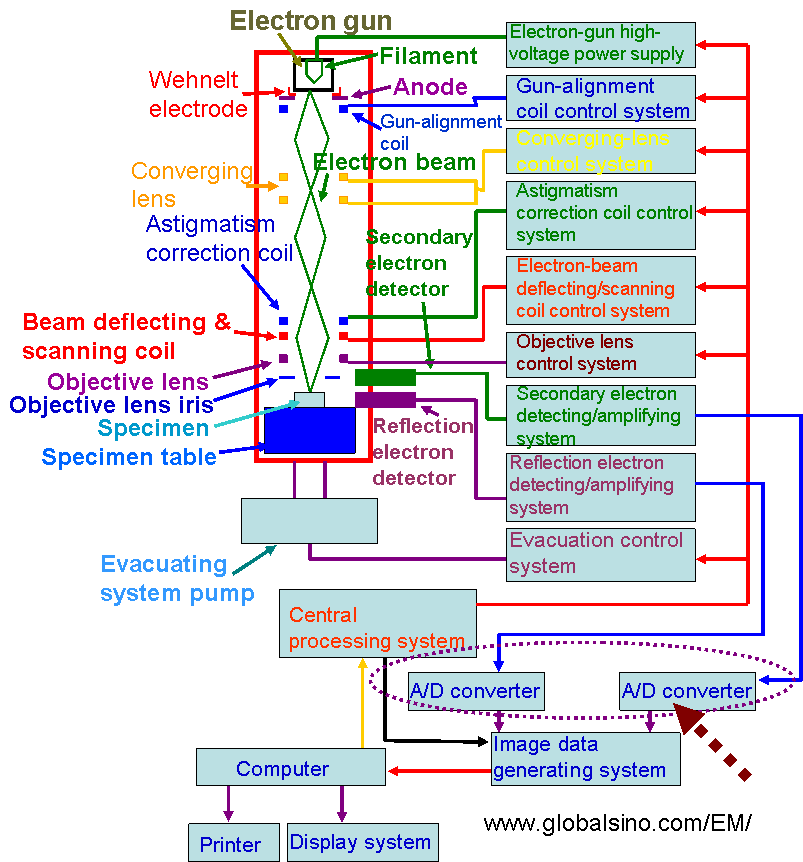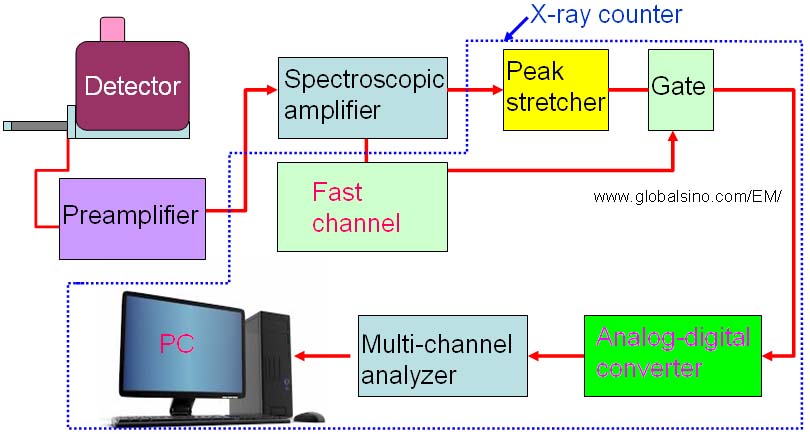=================================================================================
Figure 4221a shows an example of SEM systems. In all EMs (electron microscopes), detected information signal is amplified by a secondary electron detecting/amplifying system and then A/D-converted by an A/D converter.

Figure 4221a. Example of computer-controlled EMs: SEM system.
The schematic in Figure 4221b illustrates the components of an entire EDS system.

Figure 4221b. Schematic illustration of the components of an entire EDS system.
Overall, each absorbed X-ray photon generates a charge cloud that is composed of a number of electron-and-hole pairs, and the charge carriers are moved due to high voltage and are collected in the detector. The charge-sensitive preamplifier (PA) converts the charge pairs into a voltage pulse. The pulse is amplified and shaped in a spectroscopic amplifier (SPA). In this SPA process, one needs to optimize some constants such as gain, shaping time, pole zero, and base-line. The maximum of the intensified pulse is detected or stretched by peak-detector or peak-stretcher (PS). Finally, each pulse is individually measured with an analog-digital converter (ADC).
|

